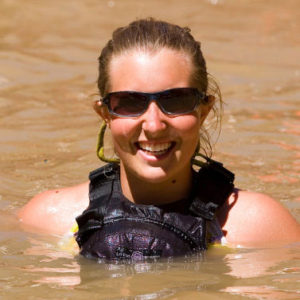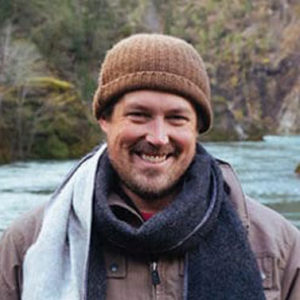What Are The Best Rivers Across The Nation For River Rafting and Why?
This country is criss-crossed by a network of beautiful rivers, some of which are just perfect for rafting adventures. We asked professionals and outdoor enthusiasts who share a love of rafting to weigh in on their favorite river rafting destinations in the U.S. Here’s what they had to say:
Andy Demetriou
Founder
Andy is a rafting expert who has voyaged every route in every raft down the Colorado River in the Grand Canyon. He founded Advantage Grand Canyon with the goal of matching travelers with the best possible trip for an unparalleled rafting experience by utilizing free trip finder services.
- Colorado River, Grand Canyon Arizona. The Colorado River is huge with different classes of rapids across the Grand Canyon. This allows people from all experience levels to enjoy river rafting, including kids and families with elderly members. Besides rafting, some trips include hiking and camping with breathtaking Grand Canyon scenes. You can also go fishing depending on the season (license is required for anyone over 14 years old). July/August is the best time for “big whitewater.” Quick tip: a 6-8 day, full-canyon motor trip is the most popular rafting trip on the Colorado River.
- Salmon River, Idaho. The Salmon River in Idaho is not only gorgeous but also a heaven for adrenaline junkies with its crazy rapids. The Salmon River is divided into 3 sections (Main, Middle Fork, and Lower Salmon) and each section offers something unique. Additionally, it is surrounded by massive wildlife and forests providing additional activities and things to do or see.
Amy McLaughlin
Owner, Lafayette Flats Boutique Vacation Rentals
Amy and her husband own Lafayette Flats Boutique Vacation Rentals, the hottest place to stay in the coolest small town of Fayetteville, West Virginia. When Amy’s not busy welcoming guests to the New River Gorge, you will find her deep in the forest hiking and hunting for mushrooms.
Without a doubt, the best whitewater rafting can be done on two rivers deep in the heart of Southern West Virginia: the New River and the Gauley River. Both are managed by the National Park Service as part of the New River Gorge National River.
Several outfitters run the New River from late April to late October, offering multiple trip options on different segments of the river. Class 1-4 rapids pull your attention away from the lush, untouched forest scenery, but it’s the sight of the New River Gorge Bridge towering 800 feet overhead that really takes your breath away.
Running the Gauley River is possible for six weeks in the late fall when the Army Corps of Engineers opens the dam and releases massive amounts of water from the swelling Summersville Lake. The Gauley River lures experienced rafters from all over the world with the thrill of running 100 raging rapids on 25 miles of steep, rugged terrain.
Tyler Callantine
Tyler and his wife Jennifer are the owners of Dinosaur River Expeditions, a river rafting company based in Vernal, Utah. They share a passion for the outdoors and for whitewater rafting. Together, they have more than 25 years of river guide and rafting experience from all over the western United States.
For generations, my family has been exploring the rivers and land in and around Uintah County in Northeastern, Utah, and I believe this area offers some of the best river rafting in the country. I am partial to the Yampa River, which is the last free-flowing tributary of the Colorado River system. I like it because it is so versatile. Depending on the snowpack, you can get a nice, family-friendly rafting excursion or a high-adventure, thrilling ride with plenty of stomach-dropping ups and downs. If you’re a thrill-seeker, one of the best parts of rafting the Yampa is Warm Springs Rapids, which is one of the top 10 big drops in North America.
There are beautiful views of sandstone cliffs and western canyons along the Yampa. You’ll also be in the heart of Dinosaur National Monument, which offers one of the biggest repositories of dinosaur bones on Earth as well as Native American sites with 700-year-old petroglyphs.
Becky Beach
Lifestyle Blogger
Becky is a mom-preneur. Her goal with Mom Beach is to help moms work from home so they can stay home with their kids. When you work a 9 to 5 corporate job, you miss out on important milestones such as first steps and first words.
The Colorado River is the best when it comes to river rafting. There are streams for beginners and experts alike. I’m an avid river rafter and enjoy the Colorado River the most. It’s so beautiful as well with so much gorgeous scenery along the way. It’s truly relaxing and adventurous! I highly recommend this river to beginners and experts.
Carlyn Topkin
Carlyn Topkin is a Vice President of Lou Hammond Group.
For over 130 years, travelers around the U.S. have sought out the Russian River in Sonoma County as a prime rafting destination. The gentle current provides the perfect occasion for those seeking a serene and peaceful rafting experience. Rafters can appreciate the scenic views of the beautiful wineries as they bask in the shade of giant redwood trees, just a short distance from the river’s edge. Natural swimming holes are scattered throughout and serve as the perfect opportunity to take a refreshing dip in the calm and cool waters. A variety of wildlife can be found throughout this tranquil river journey, in the water, and on land.The wildlife includes a variety of beautiful birds, fish, turtles, and sea otters. The neon-tinted dragonflies and tiny, green tree frogs reveal a pristine aesthetic against the bright blue and crystal-clear waters. Rafting stands out here because the river itself is one of the best assets in California wine country. After a day of rafting, its ideal to pop into one of the popular tasting rooms in the region.Delaware River, New Jersey
For true adventure seekers, the Delaware River provides a one-of-a-kind rafting experience. Located in Central New Jersey and easily accessible for those living in Pennsylvania and New York, this river is a prime destination for rafters. Depending on preference, rafters can enjoy a 2 to 4-hour experience, whether it be calmly floating on a gentle current in certain areas or an exciting trip through the white-water rapids in others.
Families can explore the several small islands distributed throughout, which are great for family picnics. Halfway down the river, all are welcome to stop in at the world-famous “River Hot Dog Man” for delicious BBQ. While rafting, bald eagles and Red-tailed Hawks can be seen soaring above with Great Blue Herons down below. Large Sycamore trees line the river, and waterfalls running directly into the river make for a unique and beautiful sight.










